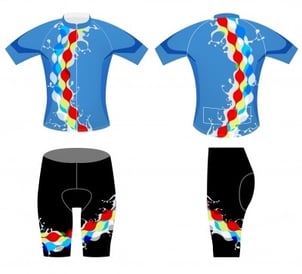I touched on the problem of expanding UK waistlines a few blogs ago and the topic popped up again recently when I was out and about shopping for clothes – no, not me. This is not as regular an event as it may be for senior management but due to the imminent arrival of a few dry and summery days, I was in need of new shorts and T-shirts.
Nothing special or posy, just bog-standard items that do not have some sort of advertising logo blazoned across for which I receive no payment. Similarly, I was keen to avoid those that look like someone has been assaulted by an ultimate, all-topping, deep-pan, soft-cheese pizza. Oh, and no fashionable rips and tears, either. Plain and simple and in one “quiet” colour; that’s me.
 If I look at the internet – it’s all true there isn’t it? – then I am about the top end of average as long as it is not Christmas, Easter or holiday time. As everyone knows, bathroom scales do not work accurately during those periods and clothes shopping then is silly anyway. There started my rare shop for T-shirts and shorts in the medium/large size range. Should be relatively simple I thought as I started to dodge the bodies of the newly pedestrianised high street throng.
If I look at the internet – it’s all true there isn’t it? – then I am about the top end of average as long as it is not Christmas, Easter or holiday time. As everyone knows, bathroom scales do not work accurately during those periods and clothes shopping then is silly anyway. There started my rare shop for T-shirts and shorts in the medium/large size range. Should be relatively simple I thought as I started to dodge the bodies of the newly pedestrianised high street throng.
Alas, no BHS, no Austin Reed and now not even an Old Guys Rule to replenish my summer wardrobe but plenty of retail options remained. With a spring in my step I activated the soft hiss of the sliding doors and there I was in one of the largest clothes retailers in the game. No names mentioned in case it jinxes the chain and we lose another big name!
The choice in style and colour was good and the racks were very well stocked with lines and lines of T-shirts and shorts. Then the problem hit me. Although I was looking for M or L sizes the only items available were extra small, small, extra-large, XXL and even XXXL! (Don’t get me started on why extra small and XXXL must be the same price.) This was not an isolated case and after checking I realised this was true for the gaudy coloured stuff and the “stylish” pre-damaged items. What is going on?
This may only be a sample of 1 but this major UK chain with several international franchise locations is probably operating with several hundred thousands of Euros hanging on racks with only a small chance of being sold anytime soon. Sizes which fit a large proportion of the population are out of stock (OOS) presenting a huge lost sales problem. And it is not just T-shirts and shorts; have a look at hugely expensive suits, coats and shoes. The same may also be true of the ladies’ fashions but I decided against browsing those racks.
In FMCG, if your Heinz beans are OOS then you pick up HP or an own label offering in the same outlet and it does not really impact on the retailer or the consumer. Not so in clothing retail where alternative options are dotted around the adjacent shopping centres. Seeing multiple Mr. Averages walk out of your store due to OOS while a host of other sizes hang around is just plain daft.
How long does that working capital flap about in the stores eating into your profits? Inevitably, the seasons change and with that the styles adjust. New designs and new ranges are introduced but where do you put them? Eventually, to create space you have to withdraw the S/XXXL stock and either marginally discount it internally or more heavily with a third party.
The problem is not only about having too few top sellers but also about how you plan for the success of the entire size range and avoid over-stocking profit guzzlers. Nobody has a functioning crystal ball but you can apply some clever supply chain analytics to ensure your store inventory is designed for success and not for failure.
Image courtesy of mapichai at freedigitalphotos.net







